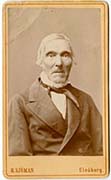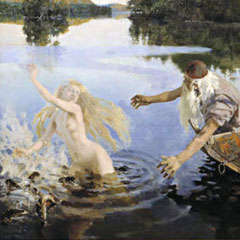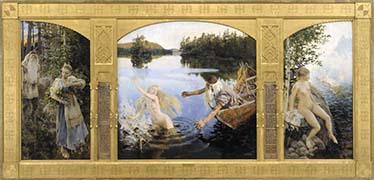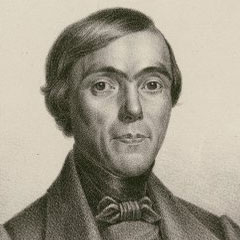Elias Lönnrot
1802 – 1884
the author of the Kalevala was a collector and editor of folk poetry. Lönnrot was the son of a poor village tailor, but become one of the most widely educated Finnish men of his days, not only in the humanities but also in the natural sciences.
The Kalevala by Elias Lönnrot, is probably the best known and certainly the most widely translated work of Finnish literature. The world of the Kalevala is mythical, not historical and its stories cannot be connected to actual places or events.

While serving as a district doctor in Kajaani, Lönnrot travelled extensively checking vaccinations. The collection that he made while on an official trip was to become the most important for the birth of the Kalevala epic.
Lönnrot made eleven collecting trips to meet with singers of poetry and write down their repertoires of the ancient oral tradition. Between 1828 and 1844 he travelled more than a thousand kilometres per year on foot, on skis, by boat or by sleigh and wrote down more than 3500 folklore texts.
Elias Lönnrot signed the preface of the Kalevala on February 28, 1835. This day has been commemorated as a Kalevala Day and the Day of Finnish Culture.



 FINLAND
FINLAND


